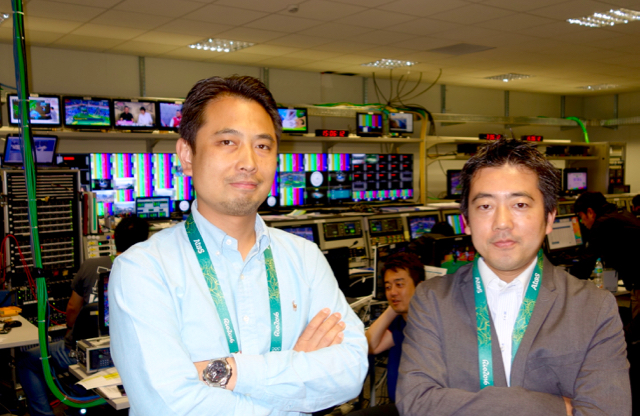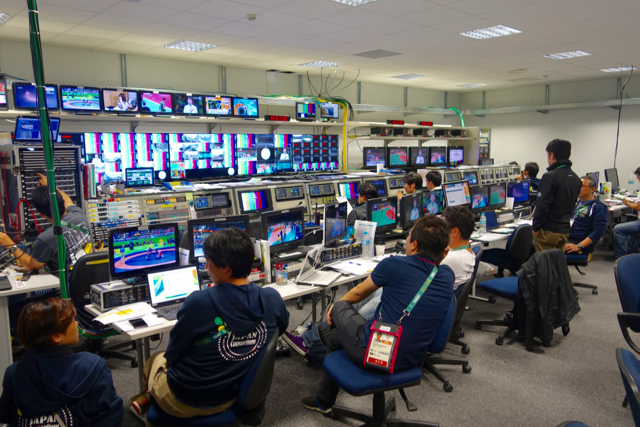Live from Rio 2016: Japan Consortium Proves Power of Teamwork
The Japanese Consortium is once again on hand for the Olympic Games, offering Japanese Olympic rights holders a way to streamline production and also leverage each other’s experience, personnel, and talents. “The JC operations team has people from each member channel to make a special team,” says Yuichi Ichiko, producer from NHK Sports.

(l-to-r) Yujin Suzuki, technical director from NTV and Yuichi Ichiko, producer from NHK Sports in the Japan Consortium broadcast operations center at the Rio Olympics IBC.
The JC members include NHK, Japan’s public broadcaster, and five commercial channels: NTV, TBS, TV Asahi, TX, and Fuji. Each of those six broadcasters have their own operations area at the IBC complete with a studio for their own hosts and interview but the six share a common production area that ultimately creates five feeds of content that are sent back to Japan. And if there is an important sports of interest to all channels then JC Operations will do the mixed zone interview.
Ichiko says the advantages of a combined approach is shared technical costs as well as the need for less personnel. Also with a joint production team handling the production of events the channels can deploy personnel on feature reporting and other content.
Yujin Suzuki, technical director from NTV, says that each of the five feeds are sent back to Tokyo via fiber at 40 Mbps.

The Japan Consortium is a joint operation among six different Japanese broadcasters.
“Here at the operations area we take in the DX lines from OBS and our own unilateral cameras and productions in cabins,” explains Suzuki. “There are four production control rooms and four commentary rooms and there the Japanese commentary is mixed with stereo and Surround Sound signals and then the feed is sent to Tokyo.”
The production switchers in use include a larger For-A model that can handle 12 inputs and then smaller Panasonic production switchers in the smaller control room.
“We also have nine EVS XT3 servers for backup, logging, and recording of feeds for production and delayed playback” adds Suzuki.
